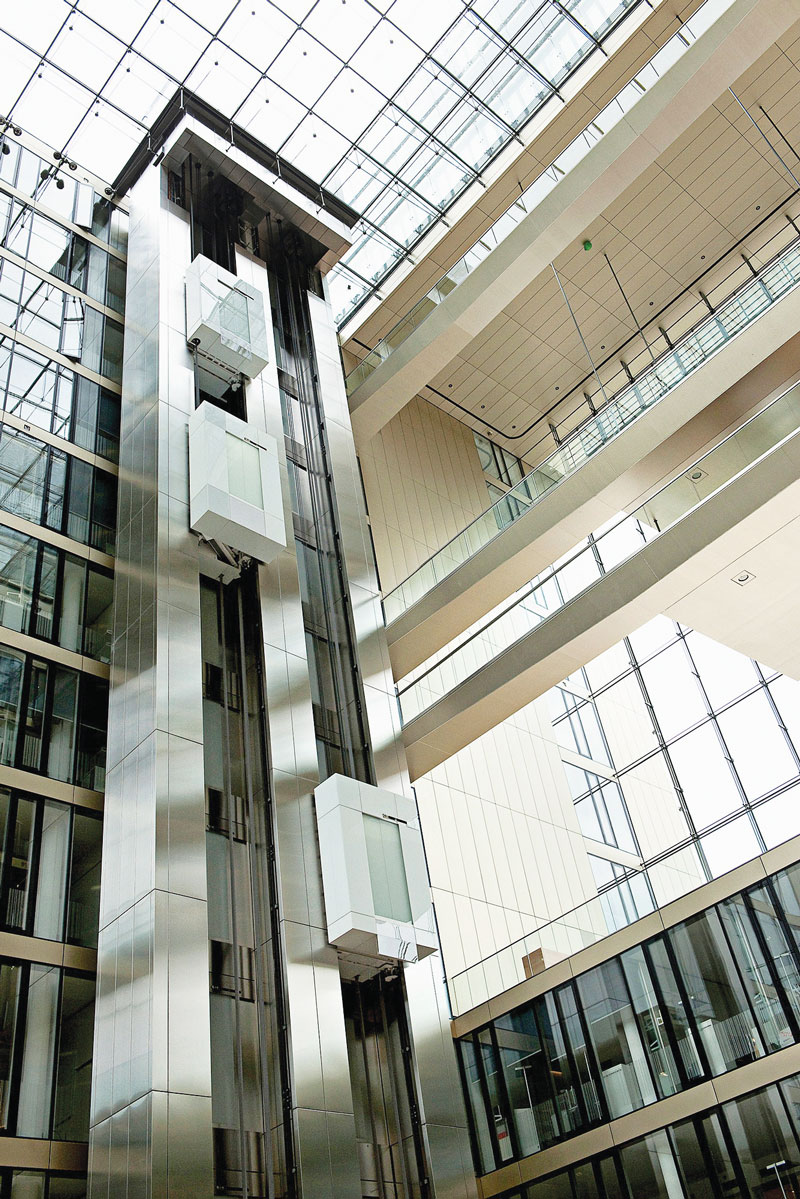Smart and sustainable elevators market in India
Manish Mehan CEO & MD, TK Elevator (India) There is a growing demand for smart and energy efficient elevators that can carry many passengers at once, safely and comfortably. These elevators have improved controls, hardware, and other systems that not only use less energy but are efficient and, in some configurations, even generate


Manish Mehan
CEO & MD, TK Elevator (India)
There is a growing demand for smart and energy efficient elevators that can carry many passengers at once, safely and comfortably. These elevators have improved controls, hardware, and other systems that not only use less energy but are efficient and, in some configurations, even generate electricity that a facility can use. The smart elevator technology uses software and microprocessor-based controls instead of electromechanical relays, allowing elevators to automatically enter sleep mode, shut off lights, air conditioning, and video screen when it is empty.
Smart elevators offer more convenient service, easier to use, and more energy efficient as compared to conventional elevators. It uses destination dispatch technology wherein passengers enter their destination floor via a touch screen panel and are assigned to a designated elevator along with other people going to the same floor. This offers minimum number of stops between intermediate floors by skipping stops at lower levels and hence, travel times are effectively reduced for users. It is preferred as new installations and retrofits by many tall buildings or commercial complexes.
Smart elevators can also be customized to detect employees of tenants based on their IDs and assign them to elevators to reduce calling, waiting and travel times. They can utilize touchless elevator calling and multi-car systems for time management. They can use the cloud to analyse usage and system performance and alert staff when maintenance is needed.
Smart elevator is especially welcomed by infrastructure applications in the urban areas, where high multi-storey buildings and mall construction is gaining significant traction. Therefore, development in infrastructure is expected to propel demand for smart elevators.
According to Fortune Business Insight report, the global smart elevator market size was $18.75 billion in 2019 and is projected to reach $38.27 billion by 2027, exhibiting a CAGR of 9.1 % during forecast period. According to Research and Market reports, India's smart elevators market is estimated to grow at a CAGR of 14.8% between 2019-2025.
Having said that, India is one of the key emerging economies in the Asia-Pacific region for smart elevators, owing to tremendous growth in the infrastructure sector, and cohesive government policies.

As urbanization continues to pick up pace in India, the need for housing and commercial space will grow, which will increase the demand for vertical transportation. The Oxford Economics' Global cities report estimates that India will account for 17 out of 20 fastest-growing cities globally between 2019 and 2035, and cities are expected to contribute to 70% of India's GDP by 2030.
The Indian government schemes such as 'Housing for All' and 'Smart Cities Mission', will further drive the development of the building and housing industries and thereby will likely drive market growth in the country. Indian Government FDI approvals for construction of townships, housing, built-up infrastructure, and other development projects are further strengthening the high-rise and luxury apartment projects in the country.
Significant innovations and advancements such as the introduction of smart elevators, Internet of Things, and emerging applications of AI and extended reality technology have changed the overall face of the elevator industry. These advancements have made vertical transport smart and more accessible in the past few years.
Digitalization has opened up new opportunities and created new values for the industry, and this era brings disruptive innovations that have the potential to change the industry significantly. With the help of IoT-based smart technologies, elevators can virtually talk to us, tell us when they need help, and even advise technicians on the cause and solution in combination with AI and machine learning. So, it can be fixed before customers even realize there's an issue. This proactive customer service is all about the ability to understand customers' needs and address them before they evolve, because downtime of an elevator is likely to affect many people's mobility, especially in mid or high-rise buildings, which can cause a significant delay in the daily lives and work arrangement.
 Bottomline
Bottomline
The acceleration of infrastructure development, growing number of smart cities, construction of buildings with smart technologies, and increased consumer spending related to residential and commercial buildings are driving development of smart elevators and its popularity in the market in India. The additional benefits of intelligent elevators, such as security, energy efficiency, and a comfortable commuting experience with less waiting time, traffic management, and user safety, promote and accelerate their adoption in commercial and residential buildings. Additionally, transformation and overhaul of older buildings by replacing the old elevators with intelligent elevator systems is propelling the modernization segment in the smart elevators market. However, the high initial investment required for installing smart elevator solutions could be a major factor restraining market growth.
Hits: 2







